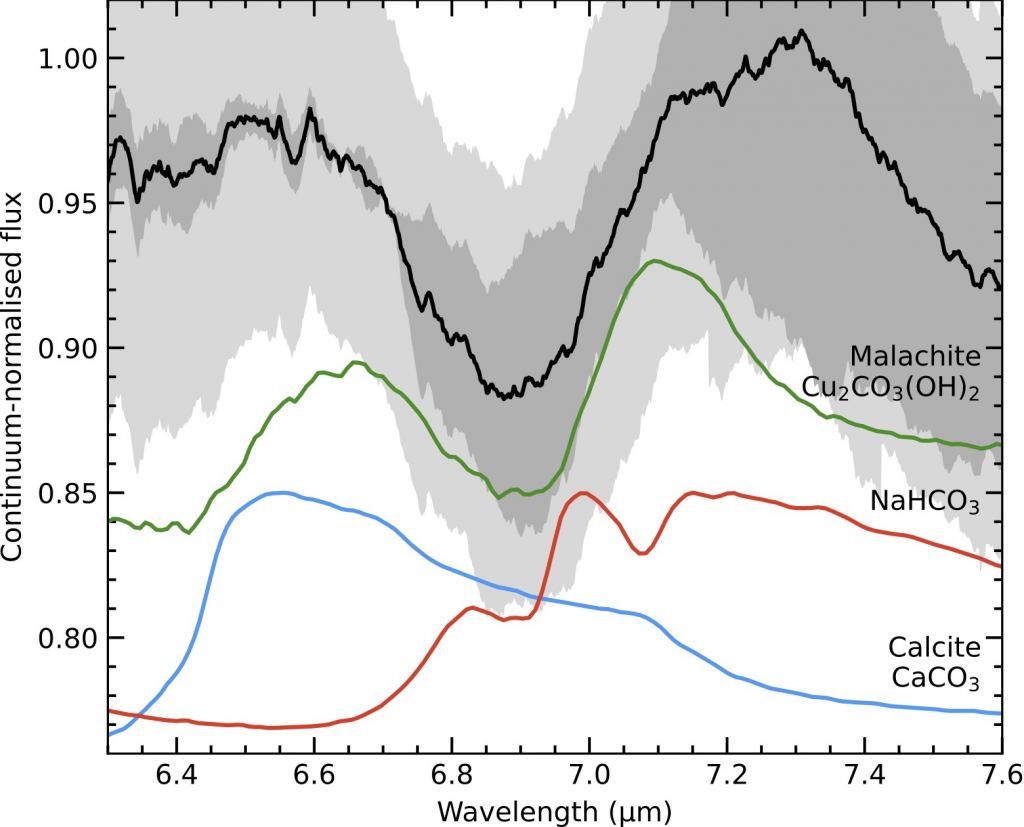Debris disks are quite common in the Universe. Young stars have protoplanetary disks from which planets form. Black holes have accretion disks that are the source of the galactic jets. Supernova remnants can form a disk around neutron stars. So what about white dwarfs?
You would think that white dwarf debris disks are common. After all, neutron stars explode with tremendous force, casting off most of a star’s outer layers, while white dwarfs are the remnants of red giant stars that swell to create planetary nebulae. If neutron stars can hold on to enough material to create a debris disk, surely a white dwarf can as well. And it turns out that some white dwarfs do seem to have debris disk. A few percent of white dwarfs have infrared emissions, which indicates some surrounding material.
Given the surface temperatures and luminosity of white dwarfs, it can be difficult to study their debris disks in detail. So we don’t know much about the composition and formation of these disks. But that is starting to change thanks to new observations of a white dwarf debris disk from the James Webb Space Telescope (JWST).
 Spectral observations showing the presence of carbonates. Credit: Swan, et al
Spectral observations showing the presence of carbonates. Credit: Swan, et alThe observations are of a star known as WD 0145+234. In 2018 experienced an infrared outburst, which suggested the fragmentation of an asteroid or comet orbiting the star. This is consistent with the idea that white dwarf accretion disks form from the remnants of their stellar systems, such as planets and asteroids. The new JWST observations confirm the presence of the disk and the idea that they form from the collisions of bodies orbiting the star.
Specifically, spectral observations show the presence of silicate grains that are collision remnants. Silicates have been detected around the white dwarf before, but these observations also suggest the presence of carbonates, which is particularly interesting. The result needs to be confirmed by additional observations, but if true it suggests larger body collisions have contributed to the disk. Carbonates form through an interaction with liquid water, so they must have formed within bodies large enough to melt water ice. At the very least, tens of kilometers in diameter. Solar system bodies often contain carbonates, and since the Sun will eventually become a white dwarf, this suggests white dwarf debris disks are the result of similar planetary systems.
The team continues to analyze the data to see what observations might be the most useful in the future.
Reference: Swan, Andrew, et al. “The first white dwarf debris disk observed by JWST.” arXiv preprint arXiv:2310.09355 (2023).

